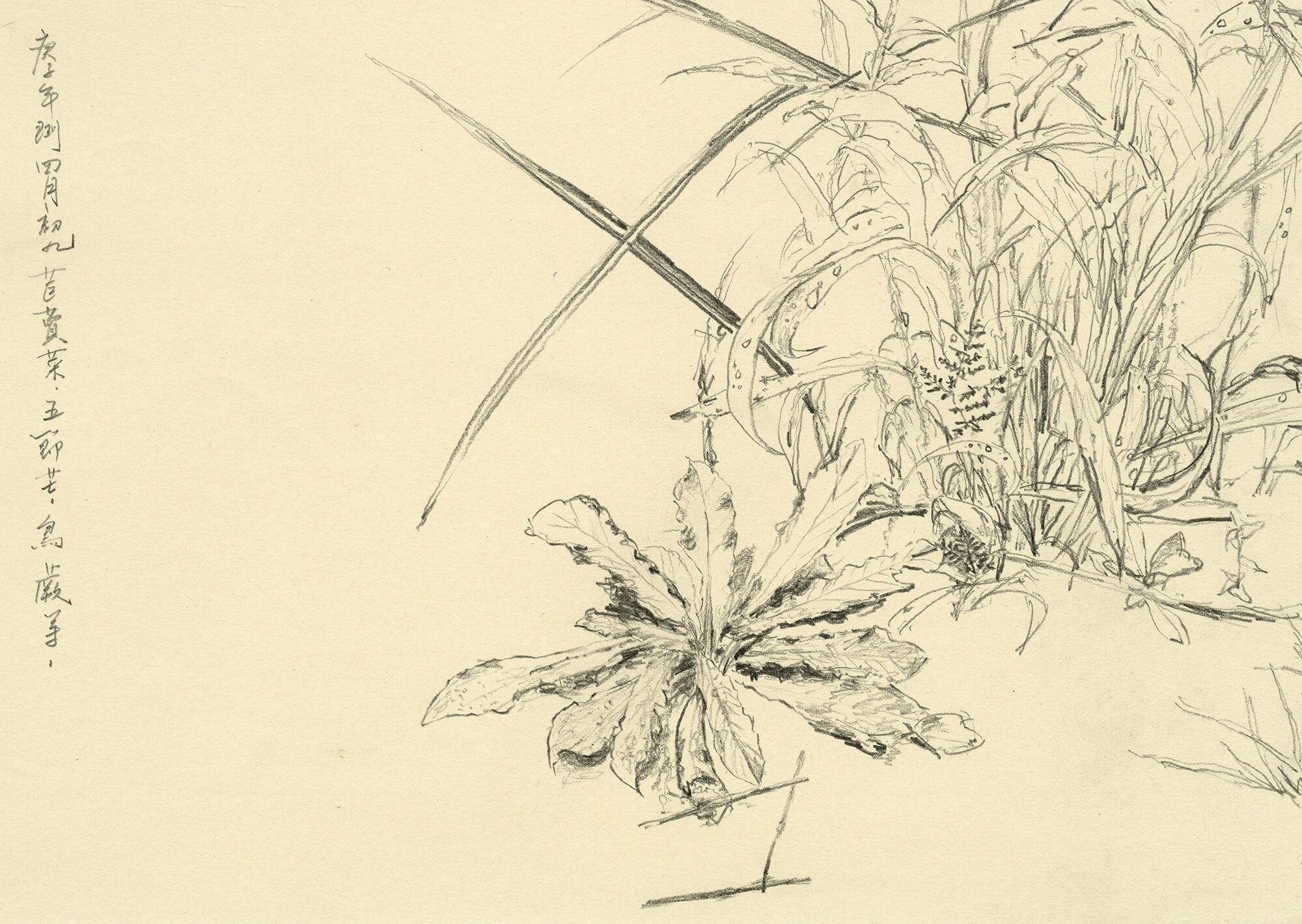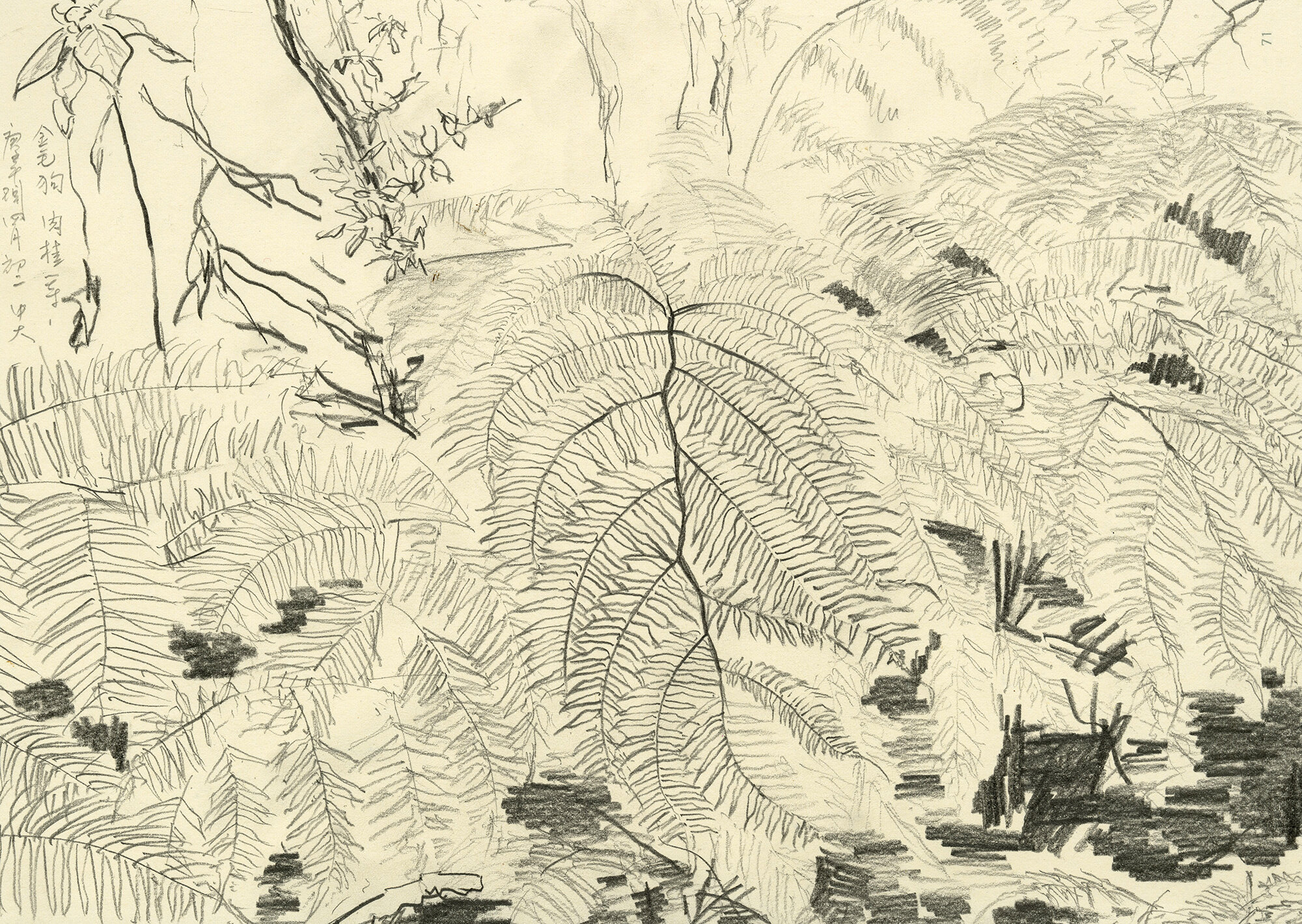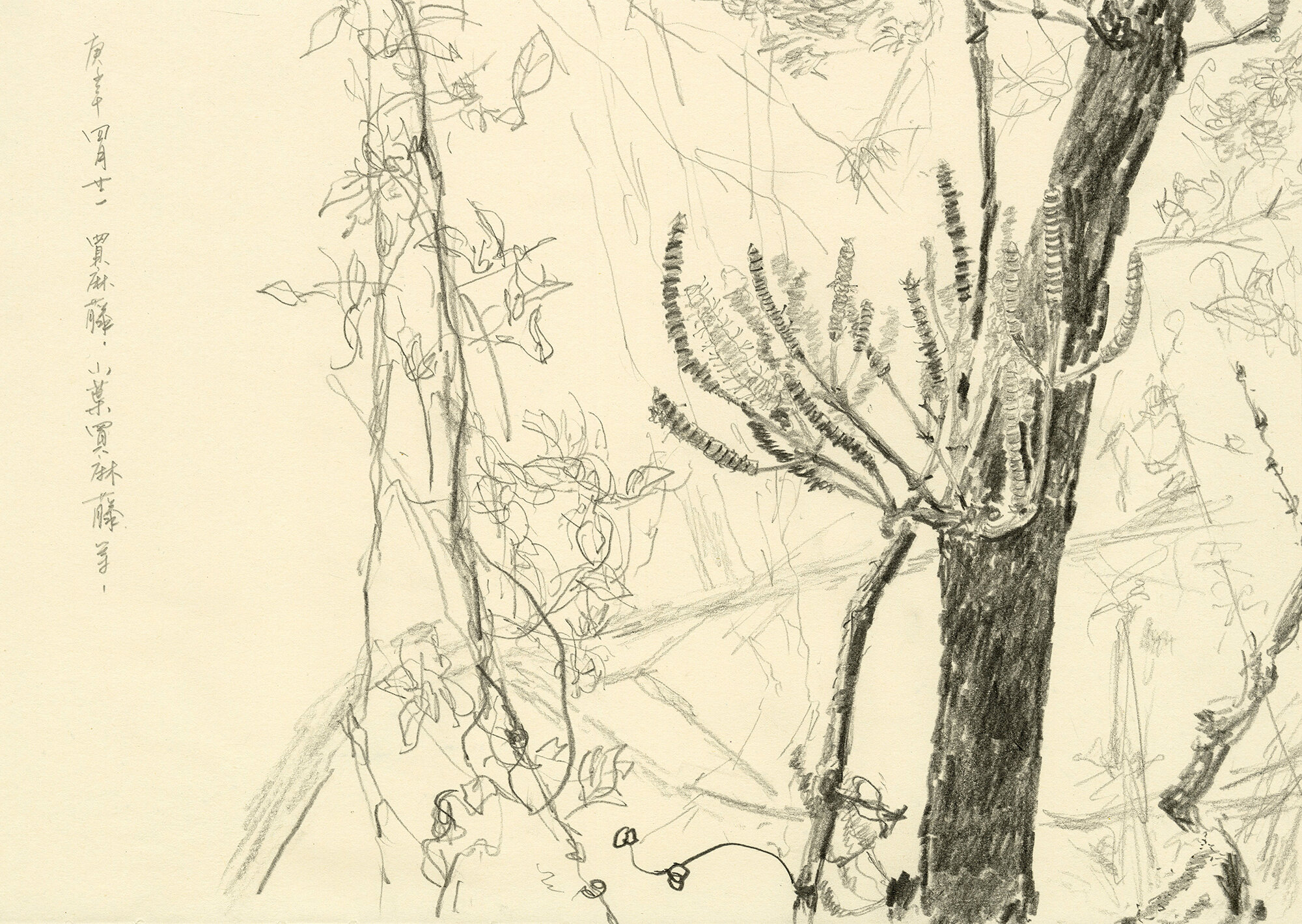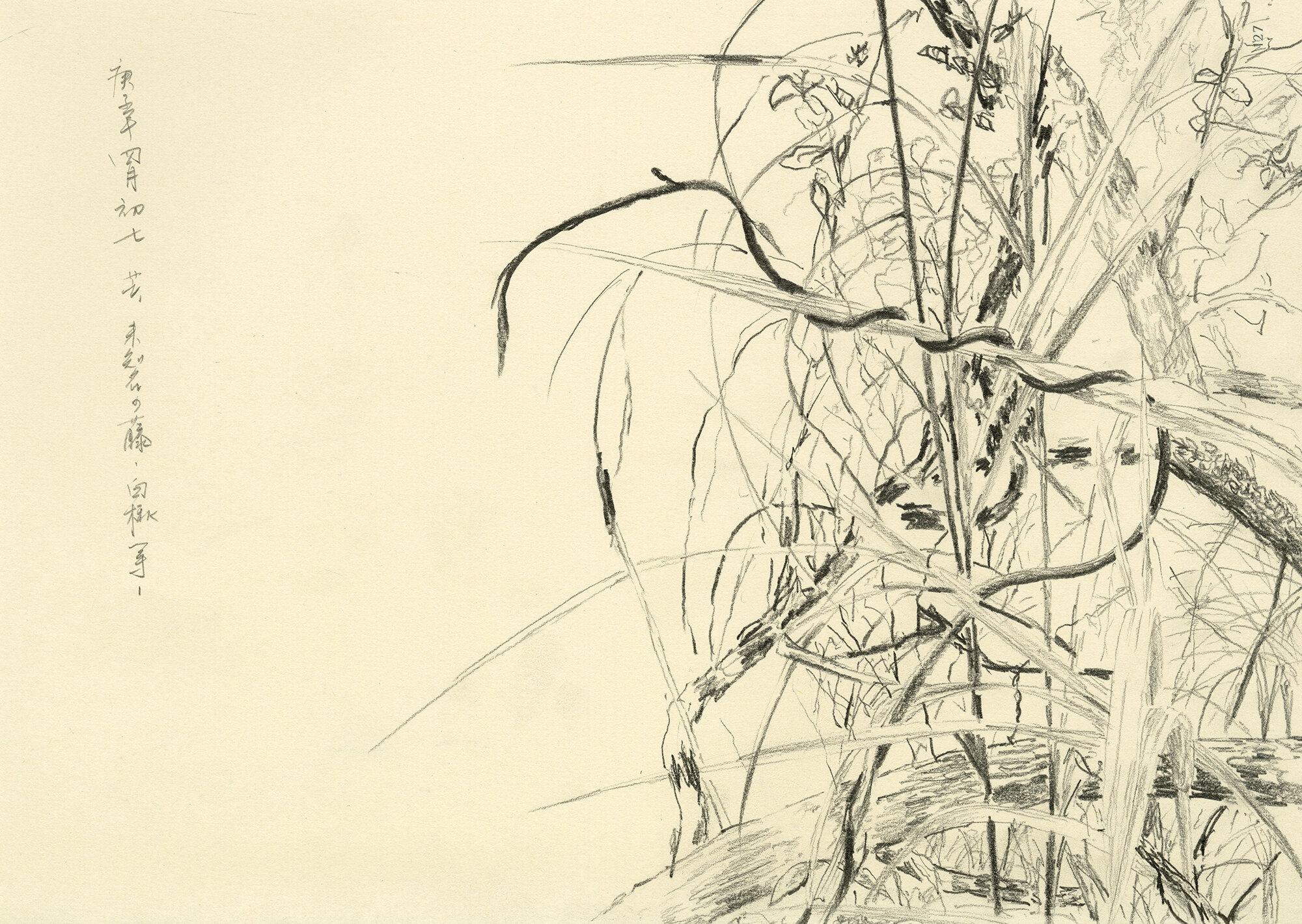ZHENG BO'S OBSESSION
“My current obsession is to go up the hill behind my village to sit with plants and draw some of them.”
ZHENG Bo (b. 1974, Beijing) lives and works in Lantau Island, Hong Kong. Committed to multispecies vibrancy, Zheng investigates the past and imagines of the future from the perspectives of marginalized communities and marginalized plants. He creates weedy gardens, living slogans, and eco-queer films to cultivate ecological wisdom beyond the Anthropo-extinction event.
His projects are included in Liverpool Biennial 2020, Yokohama Triennale 2020, Manifesta 12, the 11th Taipei Biennial and the 11th Shanghai Biennial among others. He has worked with numerous art spaces in Asia and Europe, most recently Kunsthalle Lissabon, ICA Shanghai, @KCUA in Kyoto, Asia Art Archive in Hong Kong, Parco Arte Vivente in Torino, Villa Vassilieff in Paris, and TheCube Project Space in Taipei. His works are in the collection of Hammer Museum, Hong Kong Museum of Art and Singapore Art Museum among others.
In 2020, as artist-in-residence at the Gropius Bau in Berlin, he will collaborate with plant scientists to speculate how plants practice politics.
He taught at China Academy of Art from 2010 to 2013, and currently teaches at the School of Creative Media, City University of Hong Kong, where he leads the Wanwu Practice Group.
Zheng Bo: Do you know Edward O. Wilson’s work? He created the concept of biophilia, the idea that you feel better as a human if you have other living beings around you.
I recently read that during the Tang dynasty in China (7th-10th c.), our ancestors treated plants like stones. If you look at Tang dynasty paintings, the gardens are symmetrical. But something changed during the Song dynasty (10th-13th c.): people started to see plants as living beings, and to move away from symmetry. They wanted to have a sense of liveliness in the gardens, rather than geometric patterns. When I went to Versailles and looked at the garden there, I felt that the hedges and the borders were treated like cement. Plants are used as construction materials there.




